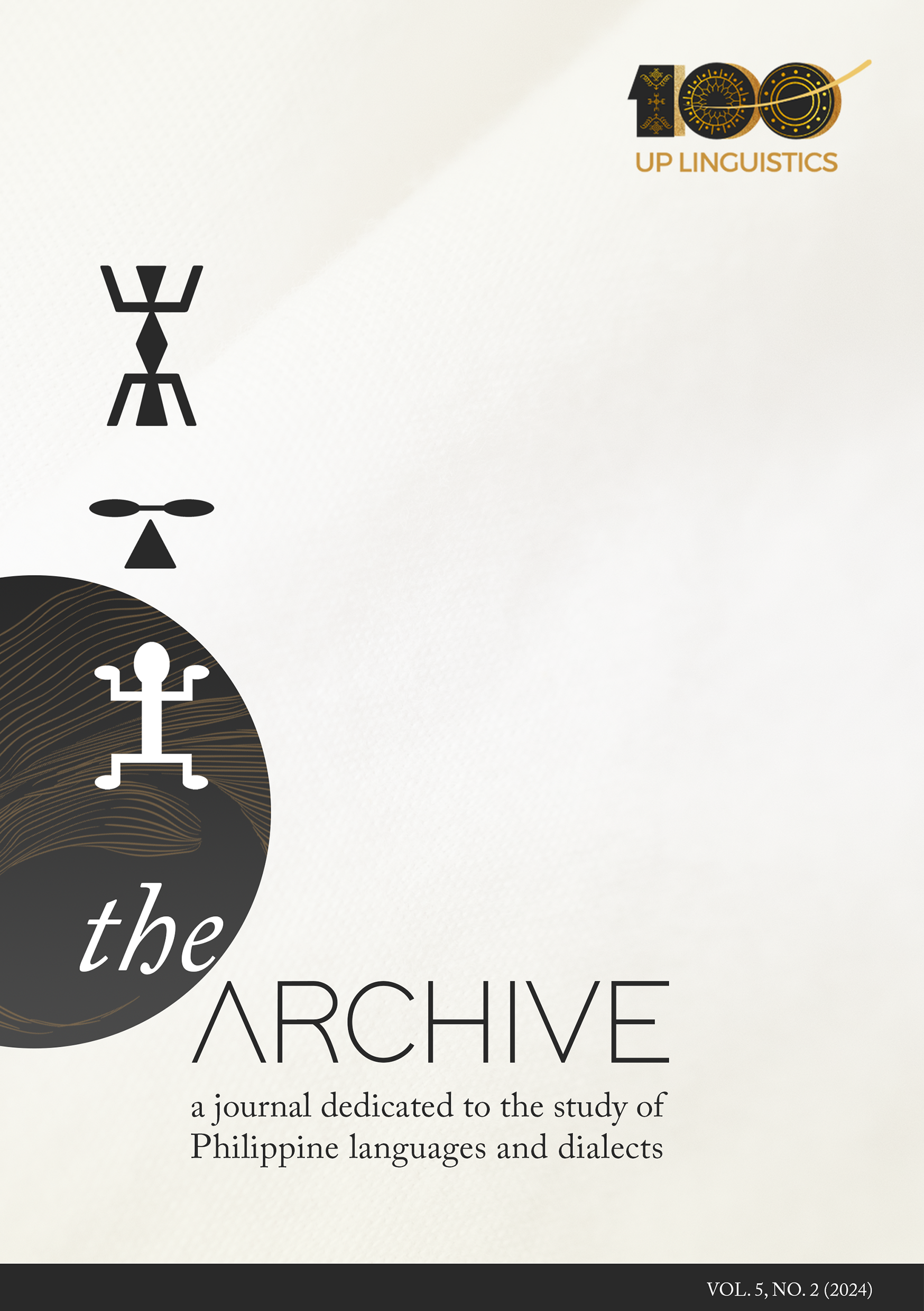Examining Cuyonon Motion Events in “Frog, Where Are You?”
Abstract
A dominant theme in the children’s story book Frog, Where Are You? (Mayer, 1969) is the expression of motions (Slobin, 2004), whose patterns vary depending on the language. Talmy (2000) proposed that the world’s languages are generally divided into a two-category typology based on whether the core schema is expressed by the main verb (V languages) or by the satellite (S-languages). In V-languages, the frame event (path) is in the verb itself, whereas in S languages, the manner is typically conveyed by the verb and the information about the path follows it in a satellite (Rau et al., 2012). Previous research has shown that Tagalog and Cebuano belong to the class of path-salient V languages along with several other Austronesian languages (Huang & Tanangkingsing, 2005). This paper conducted a preliminary investigation of motion events in Cuyonon through the following steps taken from Rau et al.’s (2012) study on Yami: (a) recognize path and manner verbs (prototypical and non-prototypical alike) used by the Cuyonon language consultant in his elicitation of the Frog Story; and (b) determine how motion events are represented in serial verb constructions. After having analyzed the given narrative data, it can be argued that Cuyonon as good as follows Tagalog and Cebuano in being a path-salient V-language, as it also gives greater attention to path information as opposed to manner. However, categorizing it as a “pure V-language” has yet to be determined. Future studies recommend gathering more Frog narratives from other Cuyonon speakers, and to also take into consideration other elicited data containing motion events beyond the children’s book.


